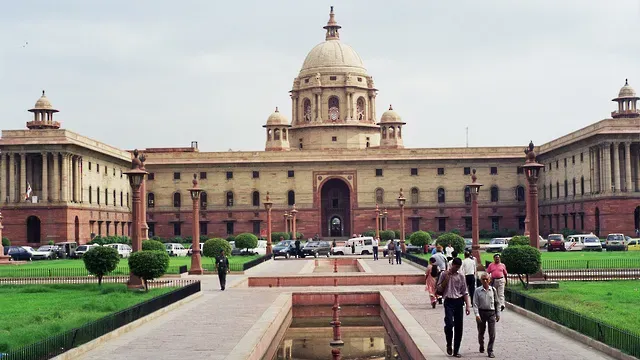The weekend read: How climate change is making us sicker
In conversation with Shouro Dasgupta, one of the authors of the Lancet Countdown report on climate change and health

Welcome to this weekend’s edition of Lights On, a newsletter that brings you the key stories and exclusive intel on energy and climate change in South Asia.
I loved researching and writing this week’s story on a mysterious plan for the world’s biggest dam, to be built in a remote corner of the Himalayas - it’s possibly my favourite so far. If you missed it, I encourage you to check it out here.
Before we dive in, a bit of housekeeping - I am taking a break from next Sunday, I will keep posting but only one story a week instead of three, partially because I genuinely need a break and partly because I will be working on another project that I will reveal in the new year.
As 2020 draws to a close, I am so happy to look at the early days of this newsletter and see how far we’ve come as a community - from one entry to three a week, from little interaction on the readers’ part to weekly emails, tweets and messages of support. Thank you!
Before the new year, I want to see if we can achieve one more thing - adding 50 members in the next 4 weeks. I know it’s a wild ambition but so is the Paris Agreement and we are all on board with it! So I’ll do my part - for each new subscription, I’ll give one for free, either to you to donate to whomever you want, or to a reader who needs it.

A farmer waters a field in rural Rajasthan - Photo by Lou Del Bello
This weekend’s interview is with Shouro Dasgupta, a researcher at the Centro Euro-Mediterraneo sui Cambiamenti Climatici (CMCC). Born in Bangladesh, he now teaches at the University Ca Foscari in Venice, Italy.
When we connect on Skype we happen to be just a couple of hours train from each other – I have just flown in from Delhi to spend a few weeks in Bologna.
Today, as well as exchanging anecdotes on our Italian lives, we are talking about the Lancet Countdown report, which every year investigates the intersection of climate change and public health. The 2020 edition, which came out earlier this week and which Dasgupta worked on, paints the bleakest picture to date of the ways in which climate change is making us sicker and shortening our lives.
Here, Dasgupta helps make sense of the report’s findings on India and beyond, and reveals a glimpse of hope in the face of a dangerous future.
Lights On: This year has certainly been unique, both from the point of view of public health with the Covid crisis, and climate change, which once again broke new heat records. How did the Lancet Countdown findings reflect all of this?
Shouro Dasgupta: One of our major claims this year with all the data and indicators is that no country, whether rich or poor, is immune from the health impacts of climate change. At the same time, the coronavirus pandemic and climate change represent convergent crises for us, and they have to be acted upon in unison. We do not have the luxury of tackling them individually. This year’s report reveals the most concerning outlook for human health since the beginning of this collaboration. Climate change impacts are claiming lives, damaging health, and disrupting livelihoods all across the world. And these are not projected impacts. This is something we're observing already.
At the same time, again, there are parallels with the pandemic, because the most vulnerable in our society are facing the greatest burdens. And this brings up an issue and a deeper question of justice and equity.
Can you give us an example of how these threats are likely to unfold?
If you think in the context of Italy, one of the reasons we have faced such high impacts of coronavirus, and so such high rates of mortality, is because 23 percent of our population is about 65. We know that unless urgent action is taken, climate change impacts will worsen, and now the pandemic has shown very clearly how our health systems everywhere are prone to becoming overwhelmed. Not even the richest countries managed to navigate the pandemic successfully. And this is just a preview of what climate change can do in the future.
Now look at a developing country like India: In 2019, overall, Indians over 65 were exposed to a total 775 million days of excessive heat. This number indicates what we call “in person-days”, namely the number of days of heatwave times the number of people affected. This way we capture the changes in length as well as in frequency of heatwaves.
Compared to the early 2000s, heat has also contributed to 84 percent more deaths among the elderly, 31,000 lives lost. Of course, many [who did not die] still had to get additional healthcare services, which increased the stress on the system. In the case of India, which has large rural areas with underdeveloped health services, this stress will only continue to get worse.
India's agricultural sector will also be one of the worst affected in terms of loss in labor. Millions of farmers work outside and due to the increase in heat events, more workers will be affected - we estimate that in India alone, 118.3 billion of work hours were lost in 2019, against 75 in 2000.

Infographic from the Lancet Countdown report 2020
Do you think we can expect tipping points due to more severe climate change, similar to what we've seen in the coronavirus crisis? And would these new emergencies place a similar burden on our society?
Absolutely. Do you remember Europe’s heatwave in the early 2000, with a huge number of deaths? And Europe is a developed region with relatively developed healthcare systems. Imagine that type of heat wave happening in India where the health system is not as developed, especially in rural areas - just imagine the sheer number of people [affected].
And as events of extreme heat increase, we will likely see more incidences of respiratory diseases, heat strokes, cardiovascular diseases, kidney related diseases and so on. And it is very possible that the healthcare system, especially in poorer states and rural areas, will get overwhelmed.
The Lancet Countdown is a mammoth piece of research, a collaboration between 35 institutions, the United Nations, the World Bank, WHO and of course it’s published in a globally renowned scientific journal. Tell us more about this endeavour behind the scenes.
So the report is a huge collaboration of more than 120 experts. Every year, we submit our indicators and improvements that we're going to make on previous work, and this goes through a peer review process, even before the report is written. We include datasets collected on the ground such as mortality data right from health services, exposure to air pollution, but also climate data such as temperature and information from climate models analysis. We also look at data that may seem a little bit unusual, such as information on diets or media coverage of health and climate change. It’s a very tough, rigorous process, but as a scientist I can say it’s also a very fulfilling one.
Were there any moments during this long process when you felt emotionally invested in what you were discovering, and maybe found it difficult to remain detached?
One of the indicators I'm involved in is sea level rise, or population exposed to sea level rise. I'm from Bangladesh, it's the world's largest delta. I was born and grew up in the capital [Dhaka], but both my parents are from Barisal, in the southwest, which is exactly one metre above sea level. The economy is still agricultural based.
In Bangladesh, we estimate that more than 16 million people will be exposed to one metre of sea level rise. Barisal is a region full of rivers and it is expected to suffer heavily from sea level rise, and not just from the point of view of how many people will be exposed to the threat. The agricultural sector at large and farmers in turn will also be heavily affected. We already have erratic rainfall and, and flood events that already are damaging people’s livelihoods. So yes, if you ask me about a personal reflection, it would be that the region where my parents hail from and a region that I have very fond childhood memories of, spending lots of time with my cousins every year, now I know that that area is at risk.
Let’s see if there is a glimpse of hope in this grim picture. Any encouraging messages from this year’s report that we can hold on to?
It's not all bad news, no. Our trust in doctors and nurses and healthcare specialists has never been higher. Impressively, health services in 86 countries are now connected with their equivalent meteorological services. This greater integration means that these institutions are planning for health adaptation, to improve the resilience of the healthcare services. And we're also seeing more people than ever before making the links between health and climate change. From 2018 to 2019, the coverage of health and climate change in the media increased by 96 percent worldwide. When the media is covering this topic more, it means more and more people are being exposed to this topic. And maybe they will change their individual behaviors. Maybe they will take part in some action somewhere. Maybe they will call their lawmaker and say: “Well, this is something I feel passionate about, and this is something you need to act on.”
That’s it for today! If you want to stay in touch just reply to this email or follow me on Twitter:



